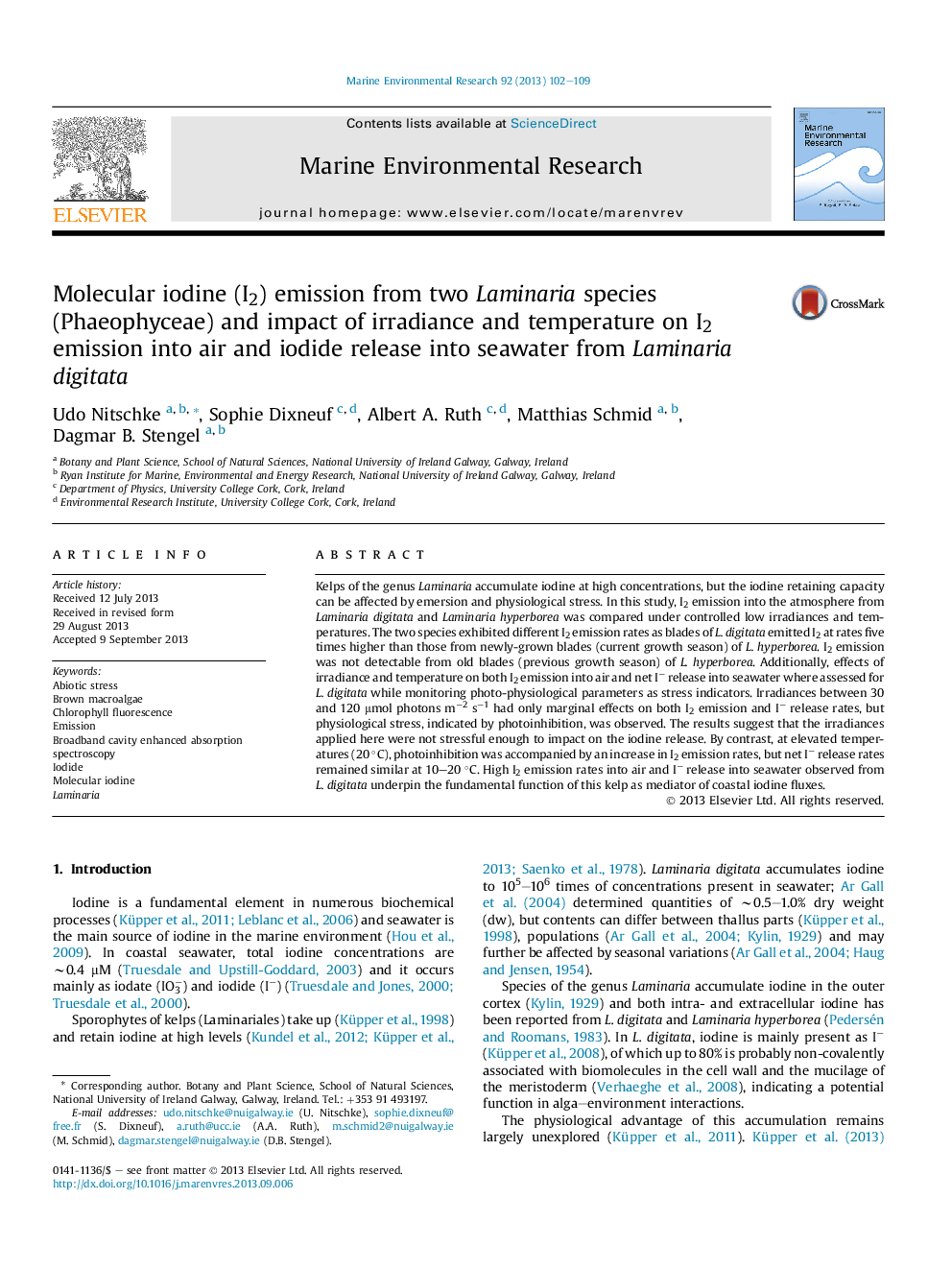| Article ID | Journal | Published Year | Pages | File Type |
|---|---|---|---|---|
| 6387867 | Marine Environmental Research | 2013 | 8 Pages |
Abstract
Kelps of the genus Laminaria accumulate iodine at high concentrations, but the iodine retaining capacity can be affected by emersion and physiological stress. In this study, I2 emission into the atmosphere from Laminaria digitata and Laminaria hyperborea was compared under controlled low irradiances and temperatures. The two species exhibited different I2 emission rates as blades of L. digitata emitted I2 at rates five times higher than those from newly-grown blades (current growth season) of L. hyperborea. I2 emission was not detectable from old blades (previous growth season) of L. hyperborea. Additionally, effects of irradiance and temperature on both I2 emission into air and net Iâ release into seawater where assessed for L. digitata while monitoring photo-physiological parameters as stress indicators. Irradiances between 30 and 120 μmol photons mâ2 sâ1 had only marginal effects on both I2 emission and Iâ release rates, but physiological stress, indicated by photoinhibition, was observed. The results suggest that the irradiances applied here were not stressful enough to impact on the iodine release. By contrast, at elevated temperatures (20 °C), photoinhibition was accompanied by an increase in I2 emission rates, but net Iâ release rates remained similar at 10-20 °C. High I2 emission rates into air and Iâ release into seawater observed from L. digitata underpin the fundamental function of this kelp as mediator of coastal iodine fluxes.
Keywords
Related Topics
Physical Sciences and Engineering
Earth and Planetary Sciences
Oceanography
Authors
Udo Nitschke, Sophie Dixneuf, Albert A. Ruth, Matthias Schmid, Dagmar B. Stengel,
